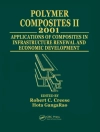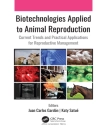Thirty years ago pattern recognition was dominated by the learning machine concept: that one could automate the process of going from the raw data to a classifier. The derivation of numerical features from the input image was not considered an important step. One could present all possible features to a program which in turn could find which ones would be useful for pattern recognition. In spite of significant improvements in statistical inference techniques, progress was slow. It became clear that feature derivation was a very complex process that could not be automated and that features could be symbolic as well as numerical. Furthennore the spatial relationship amongst features might be important. It appeared that pattern recognition might resemble language analysis since features could play the role of symbols strung together to form a word. This led. to the genesis of syntactic pattern recognition, pioneered in the middle and late 1960’s by Russel Kirsch, Robert Ledley, Nararimhan, and Allan Shaw. However the thorough investigation of the area was left to King-Sun Fu and his students who, until his untimely death, produced most of the significant papers in this area. One of these papers (syntactic recognition of fingerprints) received the distinction of being selected as the best paper published that year in the IEEE Transaction on Computers. Therefore syntactic pattern recognition has a long history of active research and has been used in industrial applications.
Horst Bunke & Gabriel Ferrate
Syntactic and Structural Pattern Recognition [PDF ebook]
Syntactic and Structural Pattern Recognition [PDF ebook]
ซื้อ eBook เล่มนี้และรับฟรีอีก 1 เล่ม!
ภาษา อังกฤษ ● รูป PDF ● ISBN 9783642834622 ● บรรณาธิการ Horst Bunke & Gabriel Ferrate ● สำนักพิมพ์ Springer Berlin Heidelberg ● การตีพิมพ์ 2012 ● ที่สามารถดาวน์โหลดได้ 3 ครั้ง ● เงินตรา EUR ● ID 6382471 ● ป้องกันการคัดลอก Adobe DRM
ต้องใช้เครื่องอ่านหนังสืออิเล็กทรอนิกส์ที่มีความสามารถ DRM












